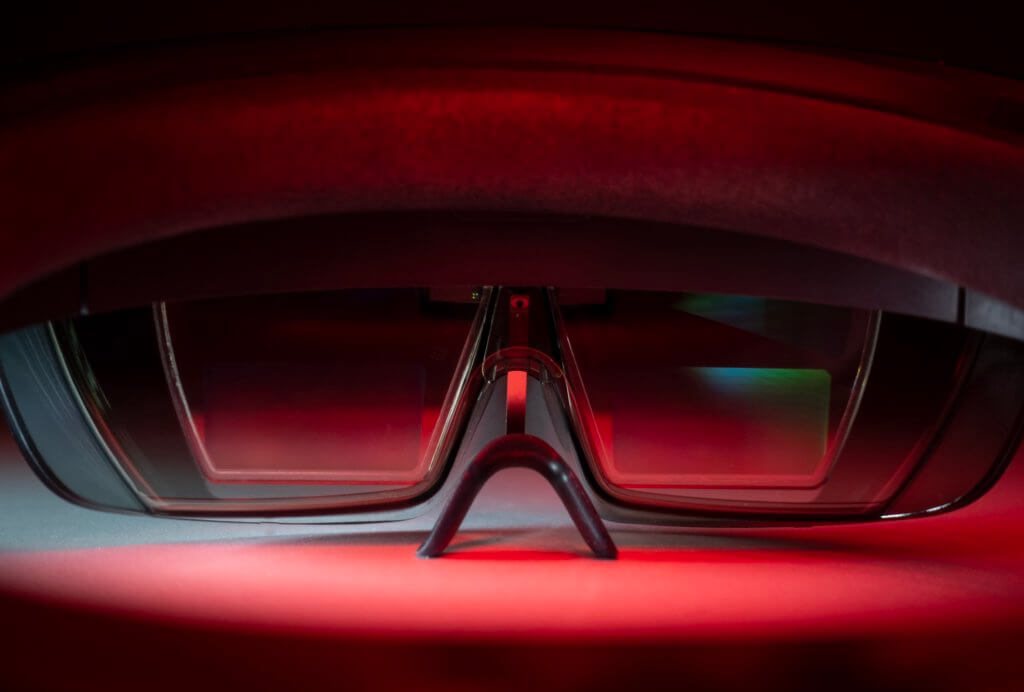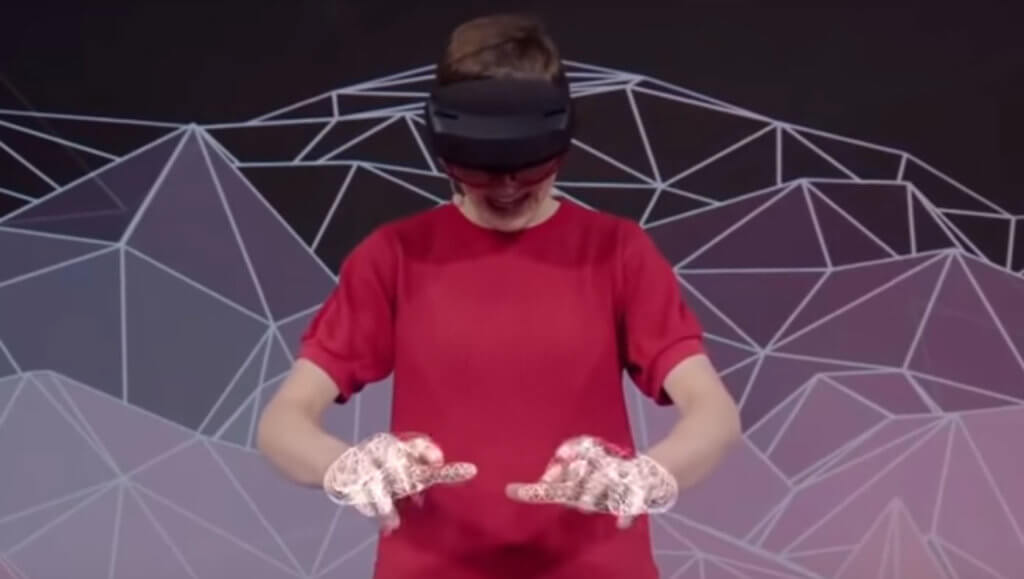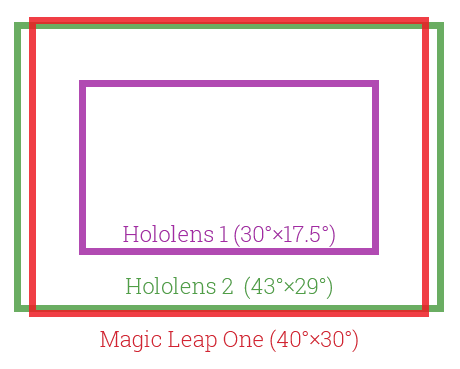Let’s talk displays- will the HoloLens 2 look better?

A conversation about the original HoloLens will always circle back to field of view– that is, how much of your field of vision the Hololens display can cover. The HoloLens 2 is said to significantly expand the field of view when compared to its predecessor. However, there is one specification that Microsoft is aiming to keep the same.

Pixels per degree of sight effectively defines the sharpness of the display. In the case of the original Hololens, the number they were able to achieve was 47 pixels per degree of sight. If you’ve ever used a Hololens, you’ll know that this is actually pretty sharp. Even though the display was only 1286×720, the fact that those pixels are only spread over a 35 degree field of view means that the text is nice and crispy.
In fact, I feel like I would have a hard time noticing a difference in clarity if they packed more pixels into the same field of view. Microsoft must feel the same way, because with the HoloLens 2, they are expanding the field of view to 52 degrees while maintaining that same 47 pixels per degree of sight. This means things will be just as sharp, but there will be more visible area for holograms to be rendered in.
In order to achieve this, Alex Kipman and his team claim to have invented a whole new laser display system- one that allows them to “steer photons.” Watch Alex explain below:
There is some trickery afoot here, however! While we know that the original HoloLens has a 1286×720 display, the only resolution that has been released for the HoloLens 2 has been quantified as “2k”- no exact resolution has been given yet. When comparing the two HoloLens headsets, the marketing speak is to say that its like going from a 720p display to a 2k display.
But what isn’t obvious is that “720p” refers to vertical lines, while “2k” typically refers to horizontal lines. So, while that sounds like that would mean you’re getting more than twice the pixels in one direction, that’s not really the case. Therefore, the jump from 720p to 2k is much smaller than it sounds at first. In cinema terms, 2k is just a slightly wider 1080p.
This is further complicated by the aspect ratio change: while the original HoloLens has a 16:9 display, the new HoloLens display is much taller in comparison rather than wider- a 3:2 aspect ratio to be exact. RoadToVR came up with this estimated comparison between the two screen shapes.

But all that is beside the point. The HoloLens 2 is going to deliver a wider field of view at a the same level of clarity. The original was sharp enough, and now we’ll be getting more of that same level of sharpness- and with an entirely new display technology to boot. If I had to guess, I’d imagine the new display technology will also result in more vivid and opaque (brighter) holograms than before- although that’s still up for debate until we have the actual hardware in our hands.
Earlier this month, Microsoft held an MR Dev Days conference. We attended and actually got the chance to try out prototype hardware for ourselves. The unit we tried certainly looks promising, even for non-final hardware. The field of view difference is certainly there, and the display is just as sharp as ever. However, we observed some color fringing and colour desaturation. They made it very clear what we tried wasn’t the final product, however.
We are very excited to use the HoloLens 2 to develop an interactive solution for your business!
